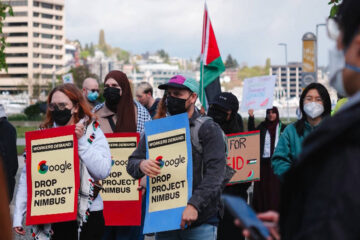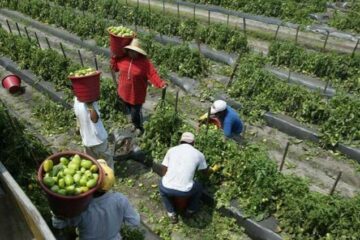As a result of a long European colonization process, indigenous people and their descendants in America have been forced to erase their heritage, language, and culture. Indigenous people have been denied self-identification and self-determination, first by Spanish colonizers and then under English/ United States rules.
Throughout the American continent, the indigenous cultures shared a vibrant trade and development from the Andes through to the Rockies. However, the encounter in 1492 with European invaders forever changed their ways of living. The continent was inhabitant by over 100 million people living in different nations and communities. The Europeans forced indigenous populations to change their languages, customs, and religions – through forced assimilation into what was considered “Western Chistian Culture.” The colonizers saw an opportunity for wealth, growth, and possession in the “new world”; for the native population, the result was genocide, slavery, rape, and trans-generational oppression. In history akin to magical realism, the entire indigenous population transformed into “Latin Americans” rather than Native Americans.
In the United States, which practiced its distinct form of white normative supremacy of “Manifest Destinity,” the government and people decided westward expansion was God-ordained. The expansion west came after the war with Mexico and the Treaty of Guadalupe Hidalgo, which led to most of the West’s addition, including Arizona, California, Oklahoma, New Mexico, Utah, and Texas. However, this acquired land was not empty, but the native population who lived under Spanish rule for over 300 years were incorporated.
The United States forced another round of assimilation. Based on census records, government officials perpetuated one of the most insidious acts of disappearance through a “paper genocide,” native were labeled as black, mulatos, mustee, or colored to justify slavery and deny land claims. This classification created an administrative archive of false documents to support the disappearance of the native population and appropriation of the land, and the practice continues until this day.
According to the United States Census Bureau, one in five individuals is identified as “Latino,” almost 60 million. The question remains: How an amalgamation of different indigenous groups conquered by Europeans develops into one pan-ethnic group? In the United States, government, academics, and industry designed the various labels to create a commercial and political voting block for disparate groups to increase governmental and economic power. The forced labeling as “Hispanic” or “Latino” fuels conversations about identity among people who trace their heritage to the region called “Latin America” or Spain. Breaking down these terms can help to understand all these labels.
Hispanic: Descendant of Spanish or Spaniards’ people
Latin: A person who speaks a language derived from Latin
Spanish: A language and person from Spain
In the last years, the different labels have become synonymous with economic issues and crime. “Latinos” work in construction and landscaping, clean houses, and likely crossed the border without “authorization aka illegal.” Similar to the colonial time when the Europeans saw indigenous- native Americans as uncivilized and wild people, their descendants are treated in the same way -through being detained, raped, or killed on the southern border.
Today, more than ever, young generations are looking back to their family history to find out more about their native heritage and start a process of decolonization. For many “Latinos,” identifying as descendants of native Americans is more accurate. Labels such as Hispanics, Latin, and Latinx hide and attack those on the path towards their real identity and decolonizing oppressive labels.
To start this process, we must considerer the first step toward decolonization:
- Recognize that even after five centuries of colonization, Native Americans and their descendants have the right to self-identification and recognized where our ancestors lived and worshiped.
- We need to understand that the language we speak today and the names and last names we have are colonization results. Spanish or English is not our ethnicity but a reflection of assimilation.
- Lastly, we need to be ready for the tough conversations that set the record right regarding land theft, slavery, physical genocide, and paper genocide
.
Yenny Delgado-Qullaw
Social psychologist and contextual theologian. She writes about the intersections between faith, ethnicity and politics.




